Prints in the digital world
 Feb 19, 2015 • 2:17 PM UTC
Feb 19, 2015 • 2:17 PM UTC Unknown Location
Unknown Location 140x Magnification
140x Magnification Plants
Plants
ieivanov
Learn about the author...
1posts
0comments
1locations
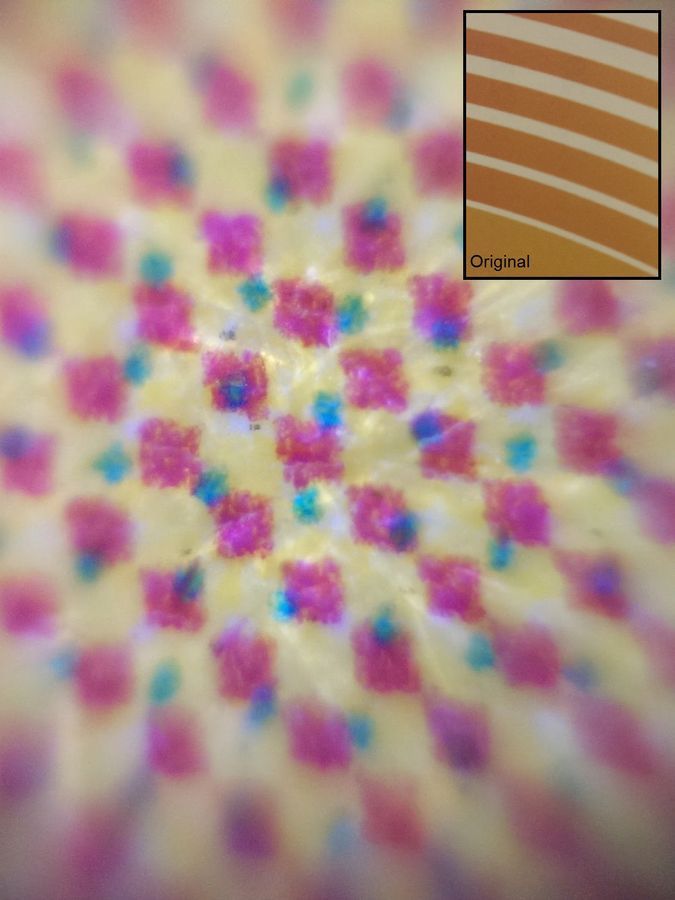
Printing has a long history, all the way from Gutenberg who came up with an easy way to make metal casts which could be covered with ink and then pressed onto paper to produce many copies of a book page, to 3D printing which is a cool new way to create three dimensional objects by moving a nozzle which dispenses still liquid resin that quickly solidifies in the desired shape.
Methods for printing used today are many, but still (I think) the easiest way to scribble down something quick is to use pen or pencil and a sheet of paper. Pens have a reservoir of ink and a small ball at the tip that rolls over the paper to dispense the ink. In the image on the left, you can see that the ink covers mostly the topmost fibers in the paper and that the trace has nicely clean edges. You may also notice small pockets where the ink aggregated. Writing in pencil, however, produced a different imprint – if you look at the image on the right you will see how sheets of the graphite broke off as the pencil went over the fibers in the paper. So in this particular image the stroke goes from top to bottom – it’s hard to figure that out from the image of the pen trace…
Methods for printing used today are many, but still (I think) the easiest way to scribble down something quick is to use pen or pencil and a sheet of paper. Pens have a reservoir of ink and a small ball at the tip that rolls over the paper to dispense the ink. In the image on the left, you can see that the ink covers mostly the topmost fibers in the paper and that the trace has nicely clean edges. You may also notice small pockets where the ink aggregated. Writing in pencil, however, produced a different imprint – if you look at the image on the right you will see how sheets of the graphite broke off as the pencil went over the fibers in the paper. So in this particular image the stroke goes from top to bottom – it’s hard to figure that out from the image of the pen trace…
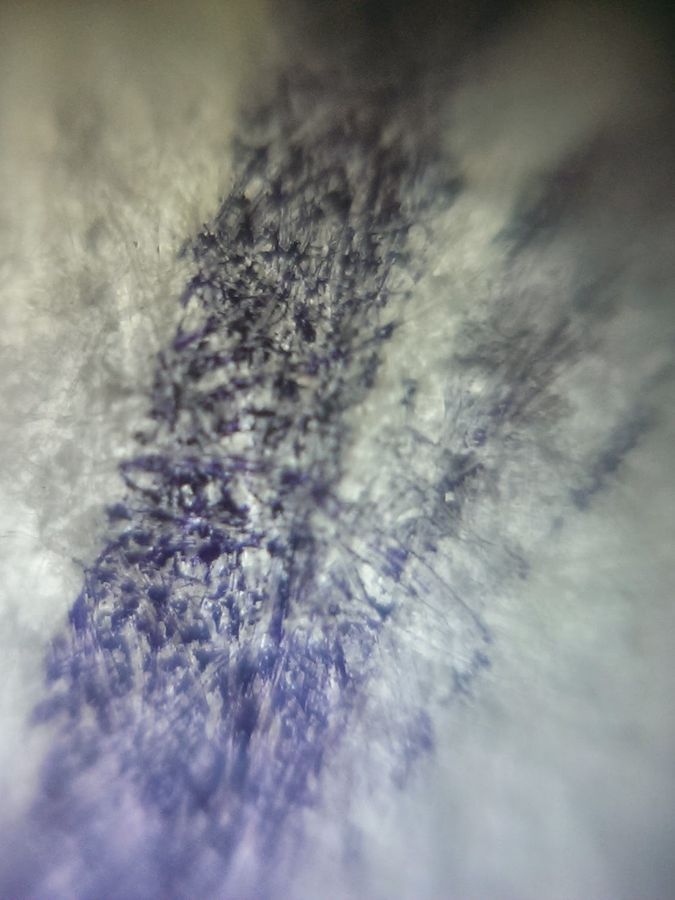
Pen scribble on paper
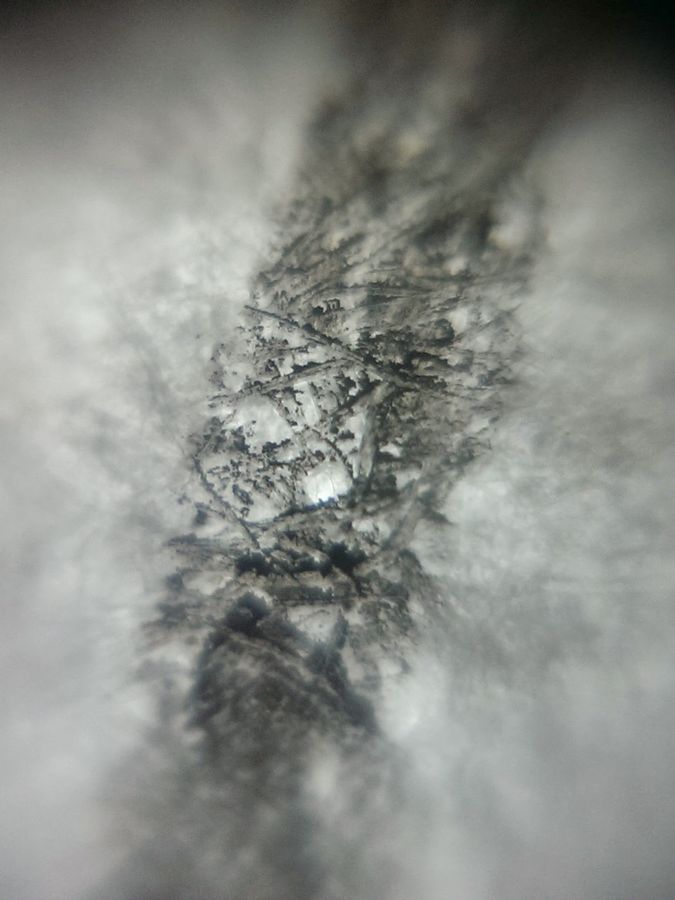
Pencil scribble on paper
Though how do you actually produce something that’s more than a few words on paper? In my college dorm, I used to have an inkjet printer. Those are inexpensive for home use but are quickly getting replaced by newer technology and are now getting a little hard to find. So I dug up an old homework assignment and this is what I saw: in the image on the left the line edges don’t seem all that clean cut. Inkjet printers work by spraying a fine jet of ink onto the paper; so if the ink splashes a little, you end up with fuzzy lines. Laser printers appear to be the prevalent technology in offices and homes now. Laser printers work by using electrostatic forces to transfer charged powered ink on the paper. So when you look closely, you will see small dust-like dots of ink in and around the printed area (image on the right).
Though how do you actually produce something that’s more than a few words on paper? In my college dorm, I used to have an inkjet printer. Those are inexpensive for home use but are quickly getting replaced by newer technology and are now getting a little hard to find. So I dug up an old homework assignment and this is what I saw: in the image on the left the line edges don’t seem all that clean cut. Inkjet printers work by spraying a fine jet of ink onto the paper; so if the ink splashes a little, you end up with fuzzy lines. Laser printers appear to be the prevalent technology in offices and homes now. Laser printers work by using electrostatic forces to transfer charged powered ink on the paper. So when you look closely, you will see small dust-like dots of ink in and around the printed area (image on the right).

Inkjet print on paper
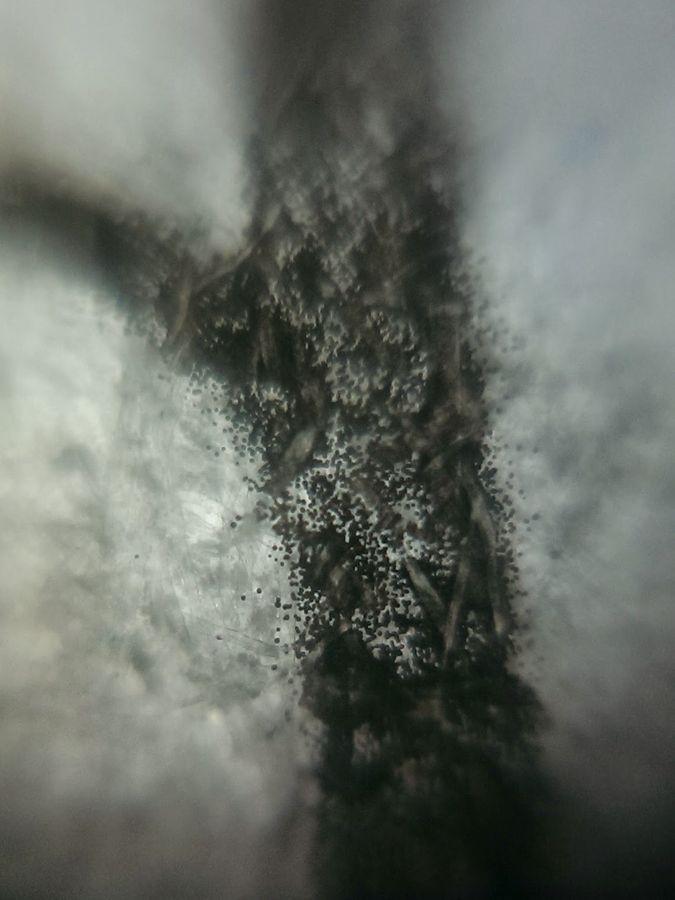
Laser print on paper
Those printers are great for the home or office, but they are slow and can’t produce large volume of copies as needed for published books and magazines. That’s where the offset printing press comes in handy. It works by first creating a negative of the page to be printed onto a plate. The plate is made by using light to activate the portion of the surface to be coated with an oily ink. The rest of the plate is covered with a layer of water, such that the ink does not spill over to blur the lines. The plate negatives run on big rolling drums and a second (offset) drum is used to transfer the ink from the plate to the paper. In this way, letters in printed magazines have very clear sharp edges, as you can see from the picture on the left. But enough of drawing black lines on paper – how do you make color images? Printers typically use a set of only four color inks. To create virtually any pretty picture you wish to print, they use a technology called halftone printing: the image is constructed by making patters of tightly spaced tiny dots from the four primary colors which when viewed from afar appear as the intended image. But when you look closely (on the right) you will see the trick that can produce just about any color tone.
Those printers are great for the home or office, but they are slow and can’t produce large volume of copies as needed for published books and magazines. That’s where the offset printing press comes in handy. It works by first creating a negative of the page to be printed onto a plate. The plate is made by using light to activate the portion of the surface to be coated with an oily ink. The rest of the plate is covered with a layer of water, such that the ink does not spill over to blur the lines. The plate negatives run on big rolling drums and a second (offset) drum is used to transfer the ink from the plate to the paper. In this way, letters in printed magazines have very clear sharp edges, as you can see from the picture on the left. But enough of drawing black lines on paper – how do you make color images? Printers typically use a set of only four color inks. To create virtually any pretty picture you wish to print, they use a technology called halftone printing: the image is constructed by making patters of tightly spaced tiny dots from the four primary colors which when viewed from afar appear as the intended image. But when you look closely (on the right) you will see the trick that can produce just about any color tone.
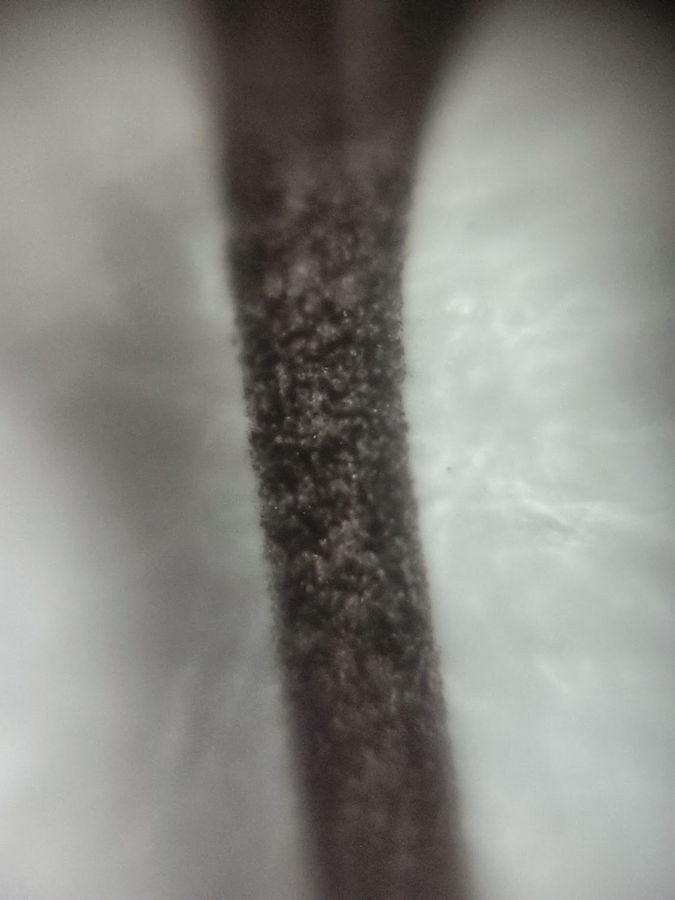
Offset print in a magazine

Halftone print in a magazine. Inset: Original image from a distance
Sign in to commentNobody has commented yet... Share your thoughts with the author and start the discussion!
More Posts from ieivanov
No more posts from this author.